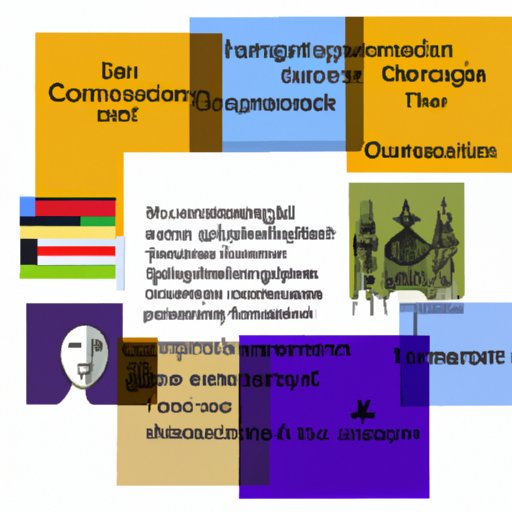Introduction
Cultural homogenization is the process by which different cultures become more similar. This phenomenon is a result of globalization, which has made it easier for people to interact with one another and share their cultures. As a result, many cultures have been influenced by one another, leading to a greater sense of unity and understanding between them. However, this process has also caused some to worry about the potential loss of local cultural identities.
Analyzing the Impact of Cultural Homogenization on Global Identity
Historical context and globalization have both played a role in the development of cultural homogenization. The rise of empires and cross-cultural interaction in the past centuries has resulted in the spread of ideas and values from one region to another. This has led to the emergence of shared beliefs and practices that are now considered to be part of global culture.
In today’s world, media and technology have further facilitated cultural exchange and homogenization. In an age of digital communication, people can access information from all over the world with just a few clicks. This has enabled them to learn about different cultures, while also creating a platform for dialogue and collaboration between them.

Examining Cultural Homogenization Through a Historical Lens
Cultural homogenization is not a new phenomenon. It has been occurring since ancient times, when people traveled to different parts of the world and encountered new cultures. During the pre-colonial period, for example, Europeans interacted with indigenous populations in the Americas and Africa, exchanging goods and ideas. This helped to shape the cultural landscape of those regions and create a sense of shared identity.
The process of cultural homogenization was accelerated during the colonial era. European powers imposed their customs and beliefs onto colonized societies, while also introducing their technology and infrastructure. As a result, many local cultures were displaced or assimilated into the dominant culture. This had a major impact on global identity, as it helped to create a unified vision of the world.
Exploring the Benefits of Cultural Homogenization
Despite the potential drawbacks of cultural homogenization, it can also bring many benefits. By exposing people to different cultures, it allows them to gain a better understanding of the world around them. This can lead to increased empathy and tolerance, as well as a greater appreciation for cultural diversity.
Cultural homogenization also makes it easier for people to access different cultures. Through the internet and other forms of media, people can explore a variety of cultural traditions and gain insight into how others live. This can help to bridge the gap between different societies and create a sense of unity.

Assessing the Pros and Cons of Cultural Homogenization
It is important to consider both the positive and negative aspects of cultural homogenization. On the one hand, it can lead to the loss of unique local cultures, as they are often replaced by more dominant ones. This can be damaging to communities, as it deprives them of their traditional identity and heritage.
On the other hand, cultural homogenization can also have a positive effect. It can encourage the blending of different cultures, resulting in the creation of new identities and values. This can help to promote unity and understanding between different societies, while also allowing individuals to express themselves in new ways.
Examining Cultural Homogenization from a Cross-Cultural Perspective
Cultural homogenization can be viewed differently from a global and regional perspective. From a global standpoint, it can be seen as a force for good, as it encourages the exchange of ideas and helps to bring people together. From a regional perspective, however, it can be seen as a threat to local cultures, as it can lead to the displacement or assimilation of traditional beliefs and practices.

Investigating the Effects of Cultural Homogenization on Local Cultures
Cultural homogenization can have a profound impact on local cultures. It can lead to the erosion of traditional languages, as they are replaced by more dominant ones. It can also have an effect on local religions, as foreign beliefs may be adopted or blended with existing ones. Furthermore, it can influence local art and music, as new styles and genres emerge due to the mixing of different cultural influences.
Conclusion
This article has explored the effects of cultural homogenization on global identity. It has examined the historical roots of the phenomenon, as well as its potential benefits and drawbacks. It has also looked at how it can affect local cultures, such as language and religion. While it is important to recognize the potential dangers of cultural homogenization, it is also important to acknowledge its potential benefits and embrace the opportunities it provides for greater understanding and collaboration between different societies.
(Note: Is this article not meeting your expectations? Do you have knowledge or insights to share? Unlock new opportunities and expand your reach by joining our authors team. Click Registration to join us and share your expertise with our readers.)
